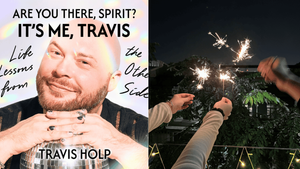*This commentary contains spoilers.
France's Lumiere Theater buzzed with excitement earlier this month as curious audience members filed in to see the premiere of Todd Haynes's Wonderstruck. The Cannes Film Festival Palme D'Or contender follows Rose and Ben, two children from different generations searching for missing relationships in their lives. They also share a deeper connection through their respective deaf identities. Wonderstruck asks its audience to make sense of the fragmented and overlapping plotlines, which allows them to fall deeply into Haynes's nostalgic and whimsical world.
Haynes is no stranger to tackling difficult matters of misrepresented groups. Starting out as a key contributor to New Queer Cinema in the 1990s, Haynes has dedicated a significant portion of his career toward awareness for LGBTQ issues and experiences. He put LGBTQ people front and center during a time when most people placed them in the background. With films like Poison, Safe, Velvet Goldmine, Far From Heaven, and Carol, Haynes contributed to queer theory and challenged preconceived stereotypes of the LGTBQ community.
Wonderstruck shifts Haynes's focus from one misrepresented community to another -- the deaf community. The two main players of the film experience similar roadblocks when the hearing people in their lives disregard their deaf identities. Rose, from the 1920s, has been deaf for the majority of her life. Ben, from the 1970s, becomes deaf after an accident. As the two children embark on their life-changing journeys, they must also learn how to maneuver around the hearing community's ignorance and intolerance toward them. The film had some room for improvement, but overall Haynes's portrayal of the deaf community and culture was respectfully and effectively achieved.
As a screenwriting major with a minor in deaf studies, I was acutely aware of how the deaf identity and culture were portrayed in this film. However, I am a hearing person and will never truly understand the experiences of deaf people. What's clear is that Wonderstruck carefully depicts the unfair ways in which hearing people address deaf peers. During Rose's story, her father insists on only speaking with her through oral communication. Therefore, Rose's only means of communicating with others is through reading print and reading lips. The latter of those options is incredibly unreliable, as English is a hard language to speech-read. Even those who are particularly skilled at it can only understand about 50 percent or less of what was said.
In doing this, Haynes placed Rose's 1920s childhood right in the darkest period of deaf education, the Oral Movement, which lasted from 1880 until the 1960s. Proponents of the Oral Movement saw speech reading and teaching students how to speak as the most effective way of educating deaf students, and sign language was not permitted in any setting. Rose's story exemplifies this period of silencing deaf people in favor of having them assimilate into the hearing world.
It's still a widely held expectation that deaf people learn how to communicate through speaking and reading lips, but it isn't expected of hearing people to learn American Sign Language. Deaf people are often forced to hold the responsibility in creating communication between the hearing and the deaf, as it's not seen as an equal effort from both parties. Haynes's representation of the hearing-deaf relationship serves as an example of how hearing people continue to try to invalidate the deaf identity.
While Haynes exposes one of the most tragic injustices visited on the deaf community, he does offer a fortunate reprieve. An older version of Rose is shown living a full life while embracing the use of ASL. She communicates through sign language with grace and ease, which serves as a refreshing shift from the confusing method she had to deal with while growing up. Rose shares ASL with those she's closest to, exhibiting it as the easiest and most accessible mode of communication for her life. Haynes celebrates ASL by incorporating it into the dialogue seamlessly and without question.
In his poem "Sit and Smile," famous ASL poet Clayton Valli describes the overwhelming feeling of being a deaf person surrounded by hearing people. Valli highlights the treatment of deaf people by hearing people in those situations, as they often neglect to inform deaf people or completely misinform them. This prevents deaf people from properly participating in events and/or understanding the environment in which they are placed.
Wonderstruck reflects this experience, with hearing people often brushing Ben and Rose off during their times of need or showing hostility toward the children because of their inability to understand. Ben even has a friend who told Ben the right information about something earlier in the film, but upon realizing that Ben was deaf, decided to provide the wrong information in order to manipulate him. Deaf people are further alienated and silenced when hearing people lack patience or tolerance.
Haynes's film provided a point of view we hardly get to see. His background in portraying LGBTQ issues translated well into re-creating the deaf experience, as LGBTQ people and deaf people are both misrepresented and misunderstood groups, operating as distinct minorities. Wonderstruck offers a beautiful and captivating look into a world that to many remains silent.
JULIA ZUBROVICH is a student at Ithaca College in New York, studying screenwriting and deaf studies.




































































Charlie Kirk DID say stoning gay people was the 'perfect law' — and these other heinous quotes